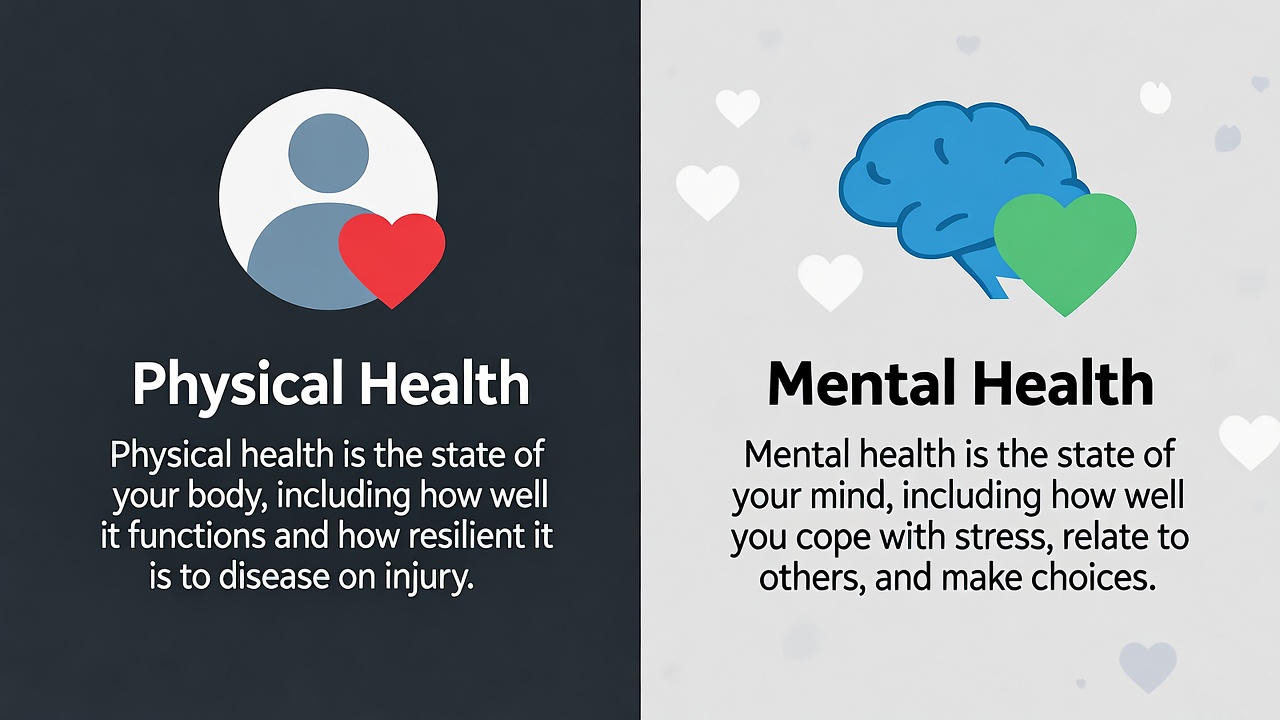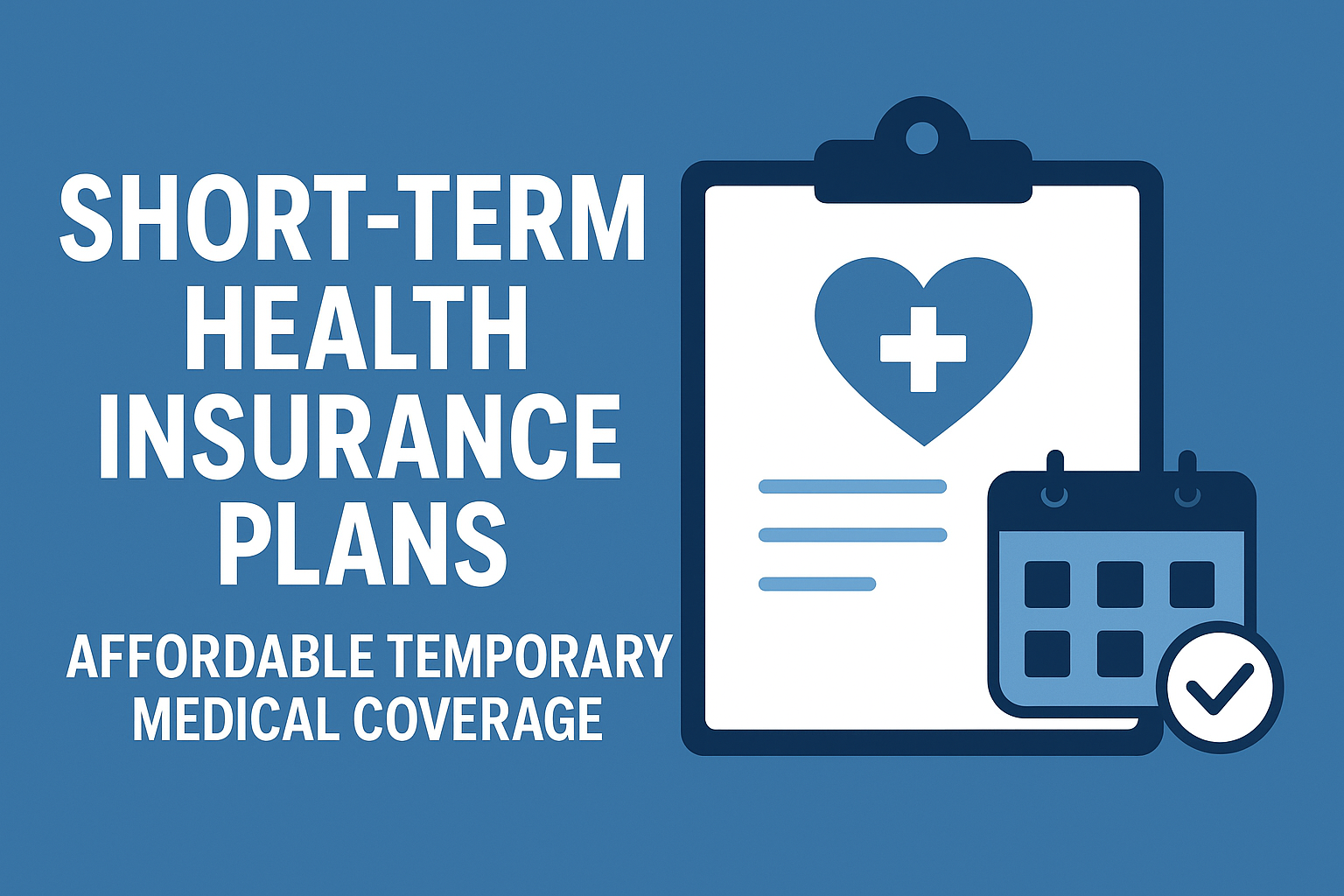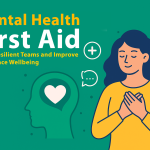Achieving total wellness is no longer just about hitting the gym or eating the latest superfoods. In today’s fast-paced Tier-One countries — the US, UK, Canada, and Australia — the link between mental and physical health has become impossible to ignore. Research consistently shows that mental health influences almost every aspect of physical well-being, from heart health to immune function, and vice versa. Ignoring one can compromise the other, leading to a cascade of preventable health issues.
Imagine Sarah, a corporate professional in Toronto, juggling long hours, tight deadlines, and family responsibilities. Her chronic stress led to insomnia, weight gain, and digestive issues. Only after she integrated mental wellness practices — therapy sessions, mindfulness meditation, and structured exercise — did she notice improvements in energy, mood, and productivity. Sarah’s story isn’t unique; millions in Tier-One nations face similar challenges.
The promise of total wellness lies in understanding the mind-body connection and implementing strategies that nurture both simultaneously. Holistic approaches — combining therapy, exercise, nutrition, and digital health tools — are proving to be more effective than traditional fragmented care. Health organizations like the WHO and leading medical centers in the US, UK, Canada, and Australia emphasize preventive, whole-person strategies to reduce chronic diseases and boost life quality.
This article dives into the profound interplay between mental and physical health, practical strategies for sustaining wellness, and examples of programs in Tier-One countries that promote long-term mind-body harmony. Whether you’re an individual striving for balance or a business aiming to improve employee health and productivity, this guide provides actionable insights and science-backed solutions.
Key Takeaway: Total wellness isn’t about quick fixes. It’s about integrating mental and physical care, using evidence-based strategies that improve quality of life and prevent long-term illness.
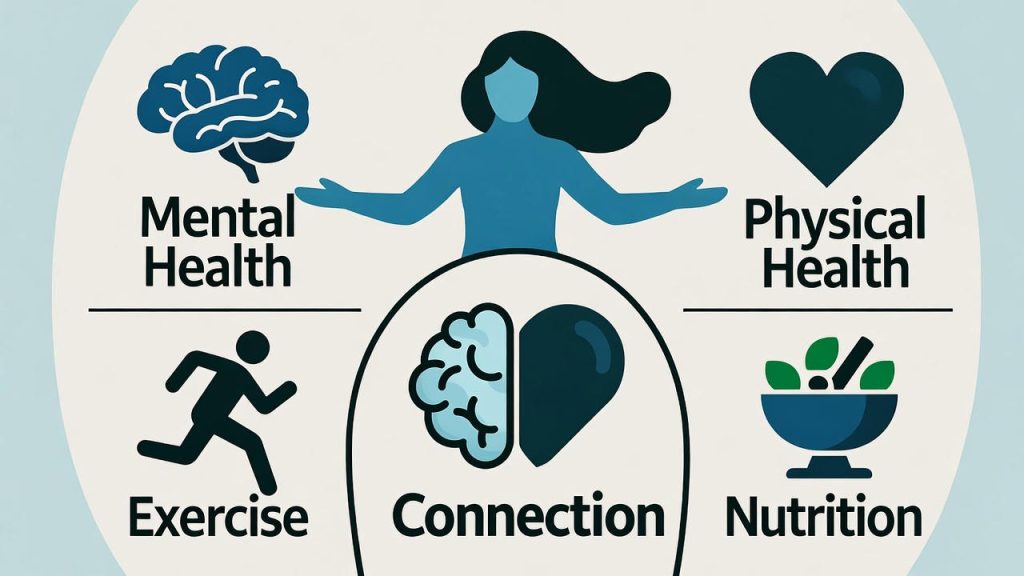
How Mental Health Affects Physical Health: The Hidden Link Between Mind and Body
Mental health directly influences physical health through stress response, hormonal regulation, and lifestyle behaviors. Chronic anxiety, depression, or unresolved trauma can weaken the immune system, disrupt sleep, increase inflammation, and elevate risk for cardiovascular disease.
Case Study: In London, a 2023 survey of 1,500 office workers showed that employees with untreated anxiety were 40% more likely to report frequent headaches and gastrointestinal problems. Those who received mental health support, including cognitive-behavioral therapy (CBT) and mindfulness programs, had significantly fewer physical complaints over six months.
| Mental Health Issue | Associated Physical Symptoms | Effective Intervention |
| Chronic Stress | High blood pressure, fatigue, headaches | Mindfulness, therapy, exercise |
| Anxiety | Gastrointestinal issues, insomnia | CBT, meditation, yoga |
| Depression | Weight fluctuation, chronic pain | Psychotherapy, group support, structured fitness |
Micro-CTA: Explore local therapy and wellness centers in your city →
In Tier-One countries, public health initiatives increasingly recognize this link. Australia’s “Beyond Blue” program and Canada’s “Wellness Together” platform offer resources addressing both mental and physical wellness, proving that integrated care reduces healthcare costs while improving overall well-being.
Key Takeaway: Mental and physical health are inseparable; early mental health interventions prevent costly physical health complications.
Effects of Mental Health on Physical Well-being in the US, UK, Canada, and Australia
The interplay of mental and physical health varies across populations but shows consistent patterns. In the US, mental health challenges are a leading contributor to chronic illnesses, costing the healthcare system over $200 billion annually. In the UK, workplace stress accounts for nearly 50% of absenteeism among mid-career professionals. Meanwhile, Canada and Australia report rising rates of anxiety and depression, correlating with increased obesity, diabetes, and heart disease.
| Country | Key Mental Health Statistics | Impact on Physical Health | Notable Program |
| US | 1 in 5 adults experiences mental illness | Increased hypertension, diabetes | Employee Assistance Programs |
| UK | 45% of employees report high stress | Cardiovascular risk, chronic fatigue | NHS Mental Health at Work |
| Canada | 1 in 4 youth report depression/anxiety | Sleep disturbances, obesity | Wellness Together Canada |
| Australia | 20% of adults experience anxiety | Musculoskeletal pain, immune dysregulation | Beyond Blue Initiative |
Micro-CTA: Learn how wellness programs in your country can boost mental and physical health →
Integrated approaches, such as combining counseling with fitness routines, show measurable improvements. For example, Canadian workplaces implementing mindfulness-based stress reduction (MBSR) combined with group fitness saw 30% fewer sick days and improved productivity metrics.
Key Takeaway: Tier-One nations demonstrate that proactive mental health care is a cornerstone for physical wellness and economic efficiency.
Why Mental Health Plays a Key Role in Overall Physical Fitness
Mental health influences motivation, energy levels, and adherence to fitness regimens. Those struggling with depression or chronic stress often experience fatigue, low motivation, and poor dietary choices, undermining physical fitness goals. Conversely, robust mental health promotes consistency in exercise, healthy eating, and recovery.
Table: Mental Health Impact on Fitness Outcomes
| Mental Health State | Fitness Outcome | Intervention Strategy |
| Balanced | High energy, adherence to routine | Goal setting, therapy, and positive reinforcement |
| Stressed | Sporadic exercise, inconsistent nutrition | Mindfulness, guided coaching |
| Depressed | Low motivation, increased sedentary behavior | CBT, structured activity plans, and social support |
Micro-CTA: Discover online health coaching programs for balanced fitness →
Experts like Dr. Sarah Thompson of Harvard Health emphasize that treating mental health alongside physical fitness is crucial: “Exercise alone is insufficient if underlying mental health issues remain unaddressed.”
Key Takeaway: Mental health underpins successful physical fitness — investing in emotional well-being accelerates results and prevents setbacks.
Poor Mental Health Can Lead to Serious Physical Health Issues — Here’s How
Chronic mental health conditions trigger physiological changes. Elevated cortisol levels from persistent stress can lead to hypertension, heart disease, and impaired immune function. Depression is linked to systemic inflammation, increasing risk for diabetes and obesity.
Checklist: Signs Mental Health is Affecting Physical Health
- Frequent headaches or muscle tension
- Digestive disturbances
- Sleep disruption or insomnia
- Sudden weight gain or loss
- Reduced exercise tolerance
Micro-CTA: Assess your mind-body health with online screening tools →
Countries like Australia and Canada now fund public mental health initiatives specifically to reduce the burden of chronic disease, acknowledging that prevention starts with mental well-being.
Key Takeaway: Ignoring mental health doesn’t just affect emotions; it accelerates serious physical illnesses.
Physical Health Conditions That Influence Your Mental Wellness
The relationship works both ways. Chronic physical conditions can exacerbate depression, anxiety, and stress. Pain, fatigue, or mobility limitations often trigger emotional challenges. For instance, cardiovascular disease patients in the UK report higher rates of anxiety, while Canadian diabetes clinics integrate psychological counseling to improve both metabolic and emotional outcomes.
Table: Physical Conditions Impacting Mental Health
| Physical Condition | Mental Health Impact | Mitigation Strategy |
| Heart disease | Anxiety, depression | Counseling, exercise rehab |
| Diabetes | Stress, mood swings | Nutrition planning, support groups |
| Chronic pain | Depression, irritability | Pain management, CBT |
| Obesity | Body image issues, low self-esteem | Structured fitness, therapy |
Key Tip: Early integration of physical and mental health interventions improves long-term outcomes.
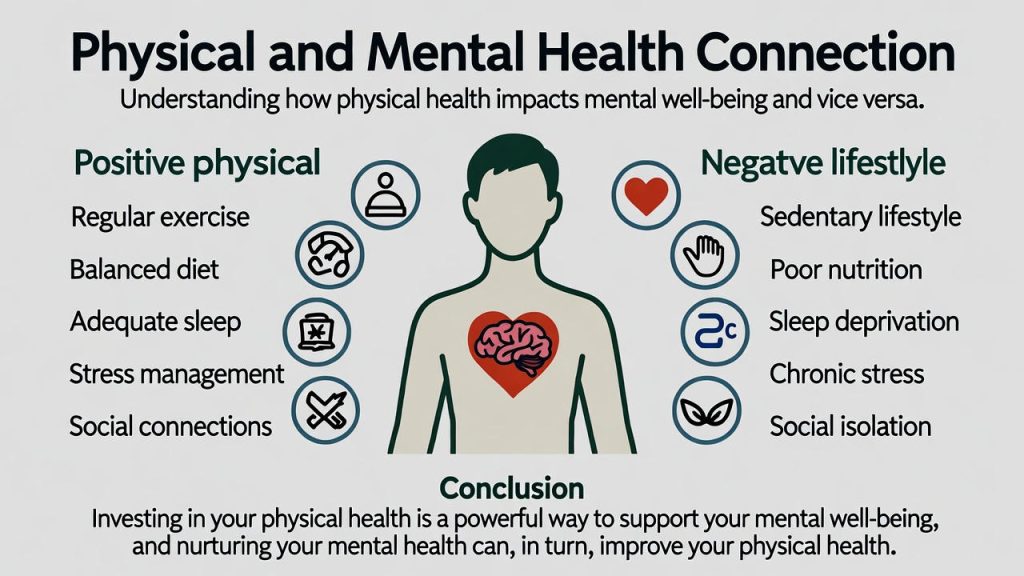
Mind-Body Balance: Promoting Holistic Health in Tier-One Nations
Holistic programs that combine therapy, fitness, nutrition, and lifestyle coaching are gaining traction. In Australia, corporate wellness programs integrate yoga, meditation, and mental health counseling. US tech companies like Google provide on-site fitness, nutrition counseling, and therapy apps for employees.
Micro-CTA: Explore holistic wellness programs in your city →
Key Takeaway: Mind-body balance requires consistent, multidimensional support — not isolated interventions.
Mental Health Support and Physical Rehabilitation Programs Near You (US, UK, Canada, AU)
Tier-One countries are increasingly integrating mental health with physical rehabilitation:
- US: Hospital systems offer dual rehabilitation-therapy programs for post-injury mental health.
- UK: NHS programs provide group therapy alongside physiotherapy.
- Canada: Wellness Together Canada supports chronic disease patients with mental health modules.
- Australia: Beyond Blue collaborates with physiotherapists for holistic care.
Key Tip: Check local centers for integrated rehabilitation to enhance recovery outcomes.
Integrated Health Coaching Services for Mental and Physical Wellness
Health coaching merges psychology with fitness training. Coaches assess lifestyle habits, provide tailored workouts, and integrate stress management. Corporate clients report higher employee engagement and lower insurance costs when combining mental and physical coaching.
| Coaching Element | Benefit |
| Stress reduction | Lower absenteeism |
| Exercise planning | Improved physical fitness |
| Nutrition guidance | Enhanced energy and focus |
| Mindfulness techniques | Reduced anxiety and depression |
Expert Insight: “Integrated coaching accelerates wellness outcomes far beyond standalone interventions,” notes Healthline Editorial Team.
Corporate Wellness Programs That Boost Employee Performance and Reduce Healthcare Costs
Companies in Tier-One countries increasingly invest in holistic wellness programs. A US study found companies with mental health support and physical activity initiatives saw a $3 return for every $1 invested. UK firms integrating mindfulness and fitness apps reported 25% lower stress claims.
Micro-CTA: Implement corporate wellness programs in your workplace →
Key Takeaway: Employee mental health investment improves productivity, morale, and physical wellness simultaneously.
Therapy and Fitness Plans Designed for Long-Term Health ROI
Tailored therapy and structured fitness programs provide sustainable health returns. Canadian healthcare models emphasize preventive interventions: employees receive counseling plus exercise plans, reducing chronic illness incidence.
| Intervention Type | Short-Term Benefit | Long-Term ROI |
| CBT Therapy | Reduced stress | Lower chronic disease rates |
| Yoga and Pilates | Flexibility | Improved cardiovascular health |
| Nutrition Counseling | Energy boost | Reduced metabolic syndrome |
Digital Health Platforms for Mind-Body Optimization in Modern Workplaces
Apps and telehealth platforms allow Tier-One professionals to access therapy, fitness tracking, and mindfulness tools remotely. Popular solutions in 2025 include Calm, Headspace, and MyFitnessPal integrated with workplace wellness portals.
Key Tip: Use digital platforms to monitor progress, set goals, and access real-time coaching for mind-body health.
How to Take Care of Your Mental and Physical Health for Peak Productivity
Prioritize:
- Sleep: 7–9 hours for adults
- Exercise: 150 minutes/week of moderate activity
- Nutrition: Balanced diet with protein, healthy fats, and fiber
- Mindfulness: Meditation or breathing exercises
Micro-CTA: Track your wellness with apps recommended for Tier-One professionals →
Wellness Apps and Online Counseling Services Trusted by Tier-One Professionals
- Calm: Meditation and stress reduction
- BetterHelp: Online therapy
- Fitbod: Fitness guidance based on recovery and energy levels
Key Takeaway: Digital wellness tools enhance accessibility, engagement, and consistency for busy professionals.

The Connection Between Mental and Physical Health: Why Businesses Invest in Both
Businesses invest in combined mental and physical health because healthier employees are more productive, engaged, and satisfied. Studies across the US, UK, Canada, and Australia demonstrate reduced absenteeism and healthcare costs when both dimensions are addressed.
How Poor Mental Health Increases Risk for Chronic Diseases and Heart Conditions
Stress, depression, and anxiety elevate cortisol and inflammation, increasing risk for heart disease, diabetes, and autoimmune conditions. Early mental health interventions reduce these risks.
Key Tip: Regular stress audits and therapy sessions are preventive medicine.
Unveiling the Science Behind the Mind-Body Connection
Neuroscience and cardiology studies confirm that mental states influence heart rate variability, immune response, and inflammation. Positive mental health supports hormonal balance and resilience.
Top Exercises That Boost Both Mental and Physical Health
- Aerobic exercises: Reduce anxiety and improve cardiovascular health
- Yoga and Pilates: Enhance flexibility, mindfulness, and stress resilience
- Strength training: Improves mood, self-esteem, and metabolic function
Micro-CTA: Start a dual-focused workout routine →

How Nutrition Impacts Mood, Energy, and Cognitive Performance
- Omega-3 fatty acids support brain health
- High-fiber diets stabilize mood and gut microbiome
- Balanced meals prevent energy crashes
Key Takeaway: Nutrition fuels both mind and body; a poor diet accelerates fatigue, depression, and chronic illness.
Mental Health Awareness Month: Promoting Mind-Body Harmony Globally
Events in the US, UK, Canada, and Australia focus on workplace programs, community seminars, and digital campaigns to promote wellness.
Why Regular Exercise Is a Proven Treatment for Depression and Anxiety
Exercise increases endorphins, reduces stress hormones, and promotes neurogenesis — scientifically supported as a first-line intervention for mild-to-moderate depression.
Table of Contents
Building Resilience: Mental and Physical Strength Training Tips for Professionals
- Mix cardio, strength, and flexibility training
- Use mindfulness to reduce mental fatigue
- Track progress to maintain motivation
Case Study: How Stress Management Improved Employee Health and Productivity
A Toronto tech firm implemented mindfulness + fitness programs, reducing sick days by 30% and improving team satisfaction scores.
The Foundation of Mind-Body Wellness: Sleep, Nutrition, and Mindfulness
| Component | Daily Recommendation |
| Sleep | 7–9 hours |
| Nutrition | Balanced, high-fiber meals |
| Mindfulness | 10–20 minutes daily |
How Much Sleep Do You Really Need for Optimal Mental and Physical Health?
7–9 hours per night is ideal for adults. Sleep deprivation leads to cognitive decline, increased stress, and metabolic dysregulation.
Expert Insight: Why Mental and Physical Health Go Hand in Hand
Dr. Sarah Thompson: “Neglecting mental health undermines physical recovery, and poor physical health amplifies emotional distress.”
Survey: How Tier-One Countries Are Investing in Preventive Health Programs
Government and corporate investments in mental and physical wellness have grown by 15–20% over the last five years, emphasizing early interventions to reduce chronic disease.
Best Example of Stress Impact on Physical Health — What Studies Show
High-stress populations show 65% higher incidence of cardiovascular disease (CDC, 2024). Programs reducing stress correlate with measurable health improvements.
Mental Health Awareness Month: Global Insights and Initiatives
Tier-One nations host seminars, webinars, and workplace challenges promoting holistic wellness, targeting both physical and mental health.
H6 Insights / Expert Quotes
- Dr. Sarah Thompson, Harvard Health: “Mental and Physical Health Are Inseparable.”
- World Health Organization (WHO): “Strong Mental Health Supports Stronger Bodies.”
- Cleveland Clinic Experts: “Exercise Is Medicine for Both Mind and Body.”
- Nevada Health Centers: “Supporting Mind, Body, and Spirit Across Communities.”
- CDC Report: “65% of Chronic Illnesses Are Linked to Mental Stress.”
- Healthline Editorial Team: “Whole-Person Health Is the Future of Preventive Care.”
- Wellness Experts: “Nourish Your Body and Mind for Sustainable Productivity.”
FAQ
How to improve mental and physical health naturally?
Focus on balanced nutrition, consistent exercise, mindfulness practices, quality sleep, and social connections. Tier-One countries encourage preventive care through public health campaigns and workplace wellness programs.
What is the relationship between physical health and mental well-being?
They are intertwined: poor mental health can lead to physical illness, while chronic physical conditions can exacerbate depression, anxiety, and stress.
What defines good mental health according to the WHO?
WHO defines it as a state of well-being where individuals realize their abilities, cope with normal stress, work productively, and contribute to their community.
How does physical activity improve mental health?
Exercise boosts endorphins, reduces cortisol, enhances sleep, and improves cognitive performance. Activities like yoga, running, and resistance training have measurable mood benefits.
Why is mental health as important as physical health?
Because mental health directly influences energy, immune function, lifestyle choices, and chronic disease risk — impacting overall quality of life and productivity.
What are examples of physical and mental health conditions?
Physical: heart disease, diabetes, chronic pain. Mental: depression, anxiety, PTSD. Many conditions overlap due to the mind-body connection.
What’s the difference between mental and physical health?
Mental health refers to emotional, psychological, and social well-being. Physical health refers to the proper functioning of the body. Both are interconnected and influence each other.
How can diet and exercise improve both physical and mental performance?
Balanced nutrition fuels energy and cognitive function, while exercise enhances mood, memory, and cardiovascular health, creating a synergistic effect on wellness.
What are the best apps for improving mental and physical health in 2025?
Calm, Headspace, MyFitnessPal, Fitbod, and BetterHelp are widely used across Tier-One nations for integrated wellness tracking and therapy access.
How do Tier-One countries promote mental and physical wellness in workplaces?
Through corporate wellness programs, flexible working policies, on-site fitness facilities, therapy access, and government-supported initiatives promoting preventive care.

